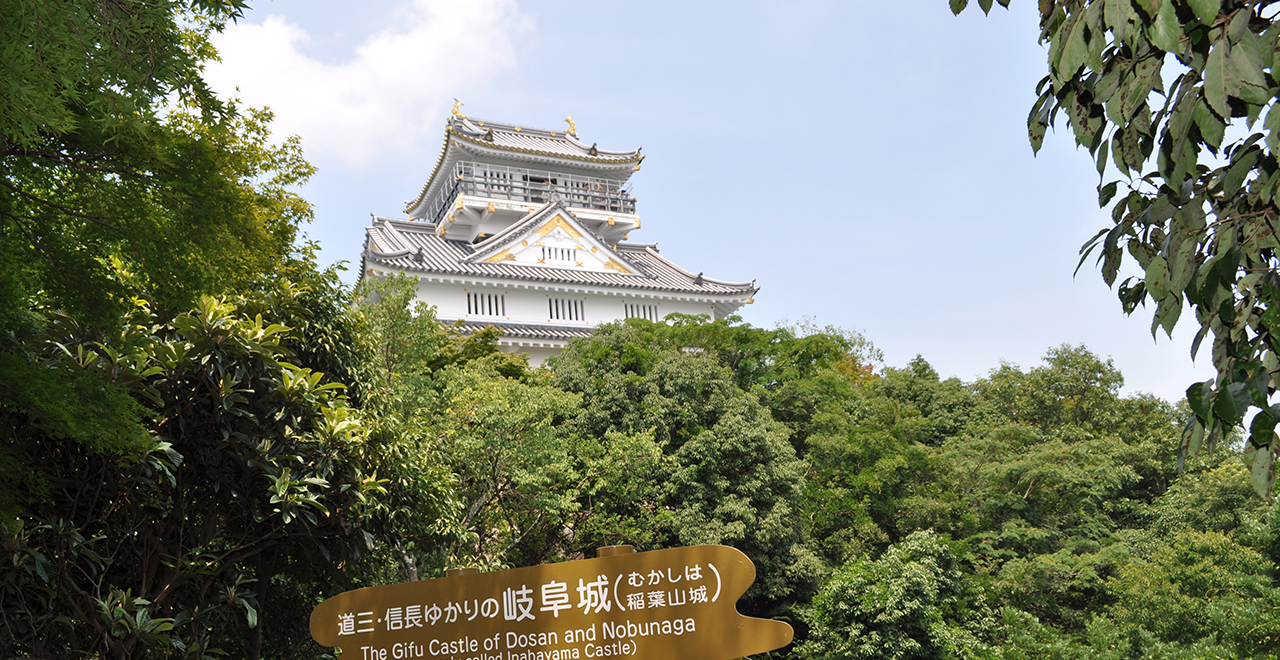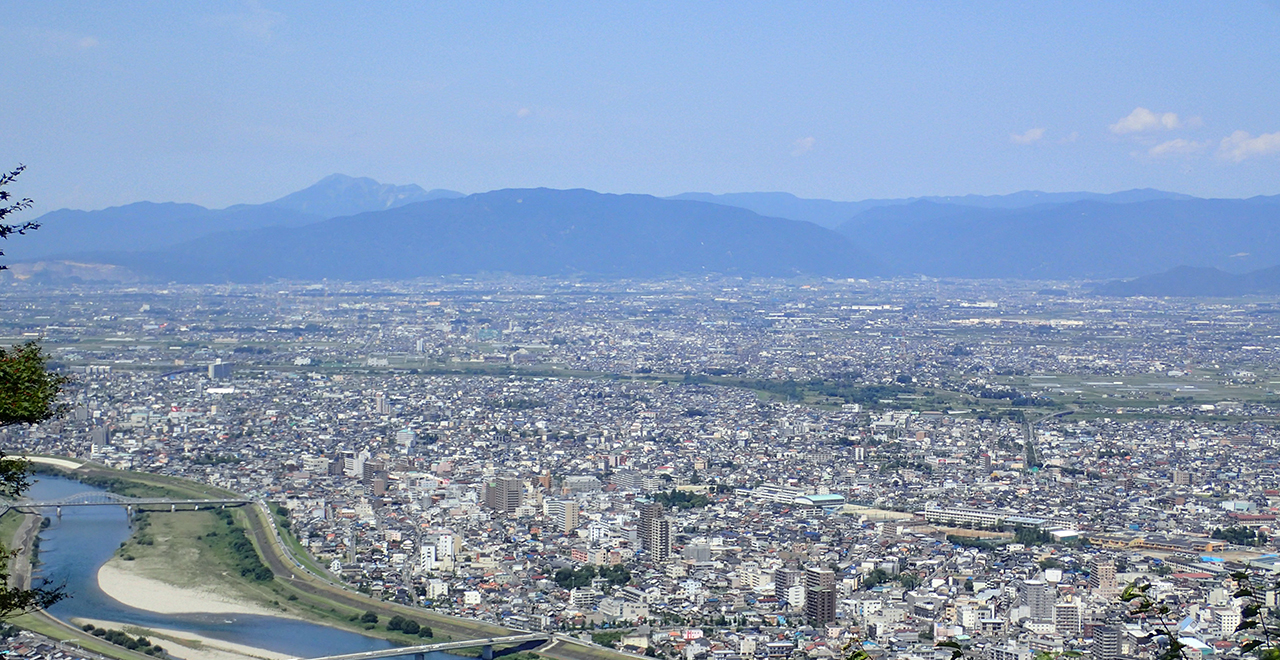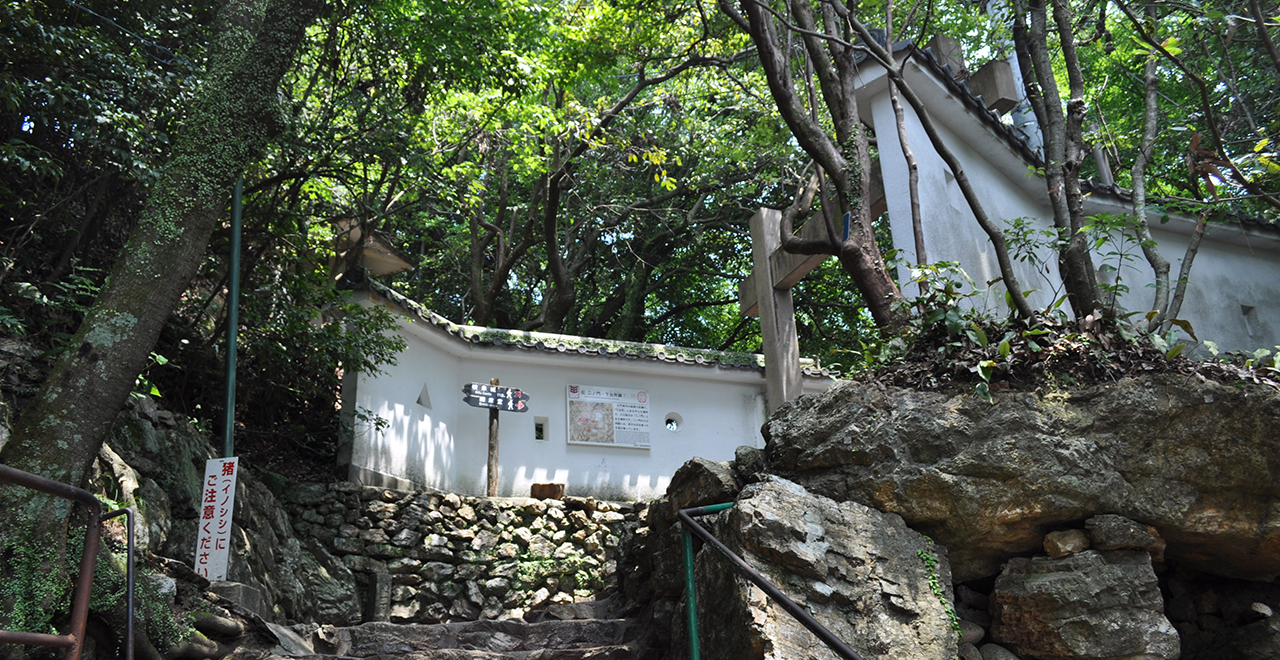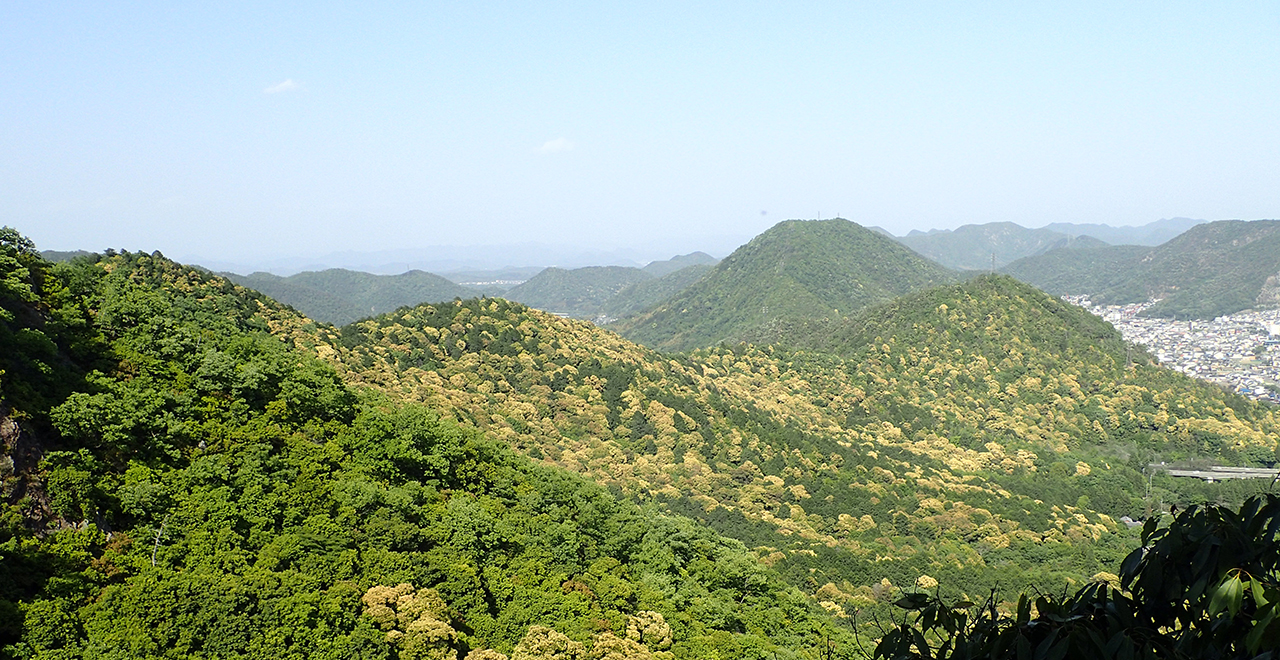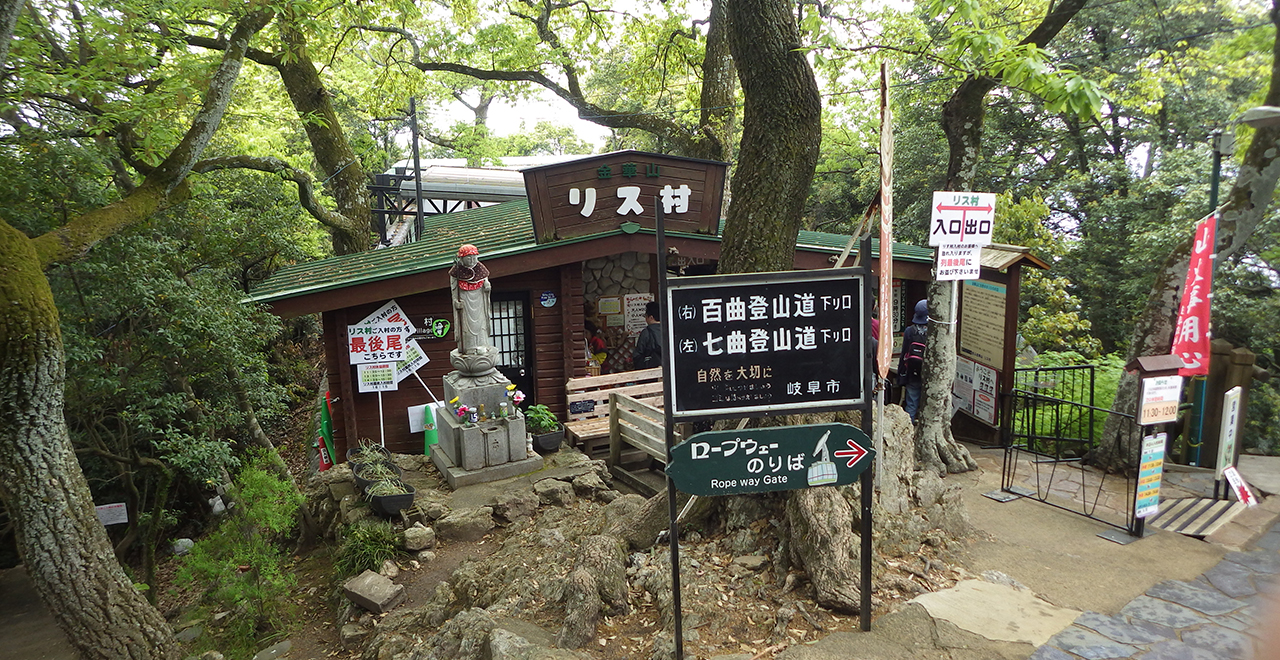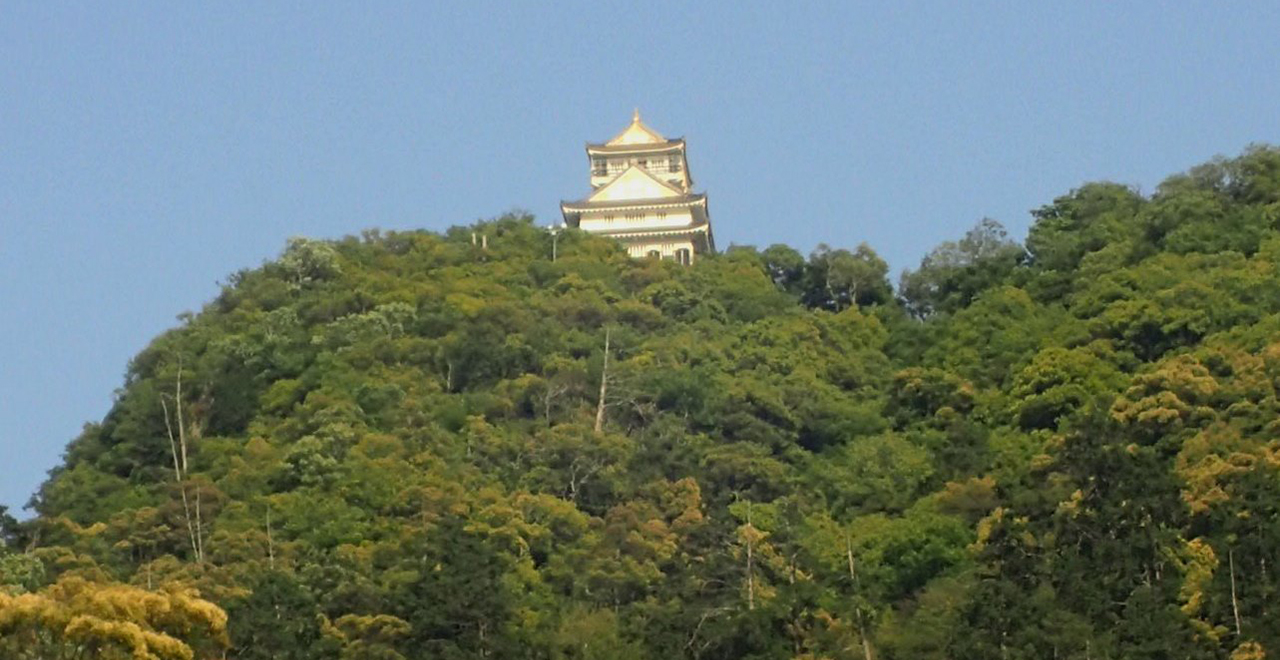Kinka-zan (Mt. Kinka) Recreation Forest
187.06ha
Elevation Lowest : 20m / Average : 20–329m / Highest : 329m
Laurel forest which includes towering Gifu Castle,
where famous feudal lord Oda Nobunaga proclaimed his slogan, "Tenka Fubu"
Laurel forest which includes towering Gifu Castle,
where famous feudal lord Oda Nobunaga proclaimed his slogan, "Tenka Fubu"
- Newest information
- Area
- Activities
- Overview
- Latest Information
- Usage Guide
- Facility
- Map
- Address
- Access
(Distances and times are
provided as a guide only) - Management office
contact details - Information on Other Local
Tourist Attractions - Official Tourist Information
- Recreation Forest
Management Committee - Supporters
- Other
- Newest information
- CHECK
Please visit official tourism websites for the latest updates and information.
- Area
- Chubu
- Activities
- Flower-viewing (species: cherry (Prunus), Tsuburajii (Japanese chinquapin (Castanopsis cuspidata (Thunb.) Schottky)) (Includes surrounding area) Autumn leaf viewing (Includes surrounding area) Waterfall viewing Picnics (lawn area/park) (Outside the forest): Available in Gifu Park Bicycle rental (Outside the forest) Guided tours (Outside the forest) : Machinaka Annainin (Gifu City volunteer guides) Shrine / Temple visit (Outside the forest) (Payment required in some cases)
- Overview
-
- Geographical/topographical features
- Mt. Kinka is a steep, independent massif that rises at the center of Gifu City. The entire mountain is composed of chert rock covered by a thin layer of soil. It has been called a "natural fortress," with a large number of naturally formed sheer cliffs.
Most of the city can be viewed from the summit, in addition to the vast Nobi Plain and Ise Bay in the distance. - Historical/cultural features
- Several circular burial mounds from the late Kofun Period (around the 6th century CE) have been found on Mt. Kinka (formerly named Mt. Inaba), and it was venerated as a sacred mountain and the site of Inaba Shrine until the medieval era. The mountain was is also well known for its scenery, which led to it being featured in more than 20 waka (traditional Japanese thirty-one syllable poems).
During the Sengoku Period (warring states period), feudal lord Saito Dosan moved Inaba Shrine to the south and built a full-scale mountain castle. In 1567, Oda Nobunaga, who overthrew the Saito family, entered the castle and changed the name of the town to "Gifu." He drastically renovated the castle and made it his base of operations as he fought to unify the country under the slogan "Tenka Fubu." This slogan is interpreted in a number of ways today, including “governing the nation through seven virtues of bu” and “ruling the world by force.”
Gifu Castle received a variety of visitors, including Portuguese missionaries, during the approximately ten years that passed from the time that Oda Nobunaga took the castle until he handed it over to his son Nobutada. The castle is extremely valuable because it is possible to compare information from the records of these visits with the ruins that remain, and also because it existed during the transition from medieval to modern times.
The castle area of Gifu Castle was managed by the Owari Domain in the Edo Period (1603-1868 CE) and by the Imperial Household Ministry in the Meiji Period (1868-1912 CE). It has been maintained as a national forest since World War II.
In 2011, the entire area of Mt. Kinka was designated a national historic site as "The Ruins of Gifu Castle." In 2015, a story that took place in Gifu Castle was the first story designated as part of the Japan Heritage scheme under the title "An Ancient Castle Town with the Spirit of Nobunaga's Hospitality." - Climate, flora and fauna
- The warm-temperate laurel forest on Mt. Kinka consists mainly of Tsuburajii (Japanese chinquapin (Castanopsis cuspidata (Thunb.) Schottky)) and Arakashi (Japanese blue oak (Quercus acuta)), etc.). Japanese chinquapin is said to have been the origin of the name Mt. Kinka (literally, "gold flower mountain") due to the golden color it lends to the mountain when in bloom (early May). The southern slope is heavily forested with deciduous broad-leaved trees such as Konara (Quercus serrata) and Abemaki (Chinese cork oak (Quercus variabilis Blume)). The ground is covered in various acorns, including those of Shii (chinquapin trees (Castanopsis)).
- Attractions
- The entirety of Mt. Kinka was once a fortress, and its natural land forms functioned as natural defenses. The path that formerly led to the castle serves as a mountain trail today, and remains, such as stone walls, that can be found along the trail evoke the history of the Sengoku Period. Today, the summit area is easily accessible by ropeway from Gifu Park.
Japan's first squirrel village opened at the summit in the late 1960s, where visitors can view and interact with squirrels. In addition, the observation platform at the summit offers a panoramic view of the Nobi Plain from Mt. Kinka’s position at the center of otherwise flat Gifu City. - Other
- Mt. Kinka was featured in Kunitori Monogatari (A Tale of the Seizure of a Province), a novel written by Shiba Ryotaro, which contains the quotation, "Who controls Mino controls Japan."
- Latest Information
-
- Regular events
- ・Gifu Festival (April): Collective term for the annual festivals held at shrines in the vicinity of Mt. Kinka
・Dosan Festival (April): Festival to honor Saito Dosan, who contributed to the establishment of Gifu City
・Ukai (Cormorant Fishing) on the Nagara River (May to October): Traditional fishing method long employed on the Nagara River
・Gifu Nobunaga Festival (October): A festival held at the central part of Gifu City to honor the feats of Oda Nobunaga and his contributions toward the construction of Gifu City - Warnings (Flora and fauna)
- Inoshishi (wild boar (Sus scrofa leucomystax)): If you see a boar, do not approach it.
Suzumebachi (hornets (Vespidae)): Do not try to drive hornets away with you hands. If you happen to approach a hive by mistake, back away slowly. - Warnings (Dangerous areas)
- Please note the following when using the mountain trails: (1) entry to off-trail areas is prohibited, in principle; (2) wear trekking shoes because some routes are very steep and rocky; and (3) never enter areas where harmful wild boars are being trapped.
- Usage Guide
-
- Entrance fee
- No fee is required for the Recreation Forest itself, but entry fees, etc. are required for Gifu Castle (Adult: 200 yen, Child: 100 yen), the Mt. Kinka Ropeway (Adult return ticket: 1,100 yen, Child return ticket: 550 yen) and the squirrel village (Ages 4 and older: 200 yen).
- Opening seasons and hours
- Accessible 24 hours a day, 365 days a year
- Staffed facilities such as administration buildings
- Gifu Castle: 8: 30 a.m.–5: 30 p.m., Mt. Kinka Ropeway: 8: 00 a.m.–6: 00 p.m. (The hours for both facilities may vary by season. Please check their respective websites.)
- Accommodation options
- Nagara River Hot Springs adjacent to the forest (7 Japanese inns and hotels), and several accommodations available in the city
- Facility
- Toilets and drinking fountains (3 locations in the area) Toilet (accessible) (10 locations in the vicinity) Footpath (Includes surrounding area) Walking trail (accessible) (Outside the forest) Parking lot (Outside the forest) : 6 locations on the Gifu Park side and 1 location on the Iwado side Observation platform (Includes surrounding area) : Entrance fee required for the observation platform in Gifu Castle Vending machine (Includes surrounding area) Shop (Includes surrounding area) Restaurant (Includes surrounding area) Campsite and/or cabins (Outside the forest) : Shikinomori Center in Mitahora; fee is required for camping Free public wireless LAN (Wi-Fi) (Includes surrounding area) : Available in Gifu Castle Dachiboku Rose Garden (Outside the forest) Resource center (Includes surrounding area) (Payment required in some cases) : Gifu Prefectural Archives, Gifu City Museum of History, Nawa Insect Museum Cultural asset (nationally designated) (Payment required in some cases) : The Ruins of Gifu Castle, etc. Accommodation facilities (Hotels/Japanese inns) (Outside the forest)
- Map
- Address
- 5 Kinkazan, Gifu City, Gifu Prefecture
- Access
(Distances and times are provided as a guide only) -
- By public transport
-
<Access from nearest railway station / bus stop>
- 1 minute on foot from the Gifu Park/ Gifu City Museum of History bus stop (Gifu Bus; bound for Nagarabashi)
<Access from major transport hubs to nearest railway station / bus stop>- Nagoya Station → (JR Tokaido Line bound for Gifu: about 20 minutes) → Gifu Station → (Gifu Bus: 15 minutes) → Gifu Park/ Gifu City Museum of History bus stop
- By car
-
<Access>
- Nagoya Station → (Nagoya Express Way Route No. 6: 20 minutes) → Meishin Expressway Ichinomiya IC → (Tokai-Hokuriku Expressway: 10 minutes) → Gifu-kakamigahara IC → (public road: 10 minutes) → Kinka-zan (Mt. Kinka) Recreation Forest
<Car parking capacity / parking charges>Several parking lots are available near Gifu Park at the foot of the mountain:
Pay parking for 143 vehicles available at the Teigai Parking (No.1) and for 36 vehicles at the Teigai Parking (No.2) (310 yen), free parking for 279 vehicles available at the Kagamiiwa Green Space, and parking for 12 vehicles for the physically challenged and 9 buses available at the Omiya-cho Parking - Nearby tourist facilities
-
- Gifu Park, Ruins of Oda Nobunaga's Residence, Three-story Pagoda, Nawa Insect Museum, Gifu Prefectural Archives, Gifu City Museum of History, Gifu Shouhouji Daibutsu (Great Buddha), Ukai (Cormorant Fishing) on the Nagara River, Nagara River Ukai Museum, etc.
- Management office contact details
-
Gifu District Forest OfficeTEL:050-3160-6090
https://www.rinya.maff.go.jp/chubu/gihu/index.html
- Information on Other Local Tourist Attractions
- ー
- Official Tourist Information
-
Gifu City [External link]Gifu Convention and Visitors Bureau [External link]Mt. Kinka Ropeway [External link]
- Recreation Forest Management Committee
- ー
- Supporters
-
Cooperative volunteer groups, etc. (Jujikai, Kinkazan Supporters, Gifu City Morimori Club)
- Other
- ー





